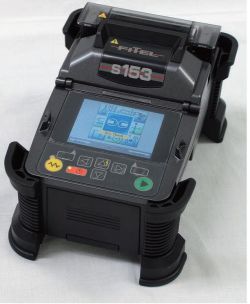Sản phẩm
-
BẢO HỘ LAO ĐỘNG
-
THIẾT BỊ AN TOÀN PCCC
-
THIẾT BỊ CỨU HỘ, CỨU NẠN
-
THIẾT BỊ VIỄN THÔNG
-
THIẾT BỊ ĐIỆN, CHỐNG SÉT
-
THIẾT BỊ ĐO CÁC LOẠI
-
LẮP ĐẶT HỆ THỐNG PCCC
-
THIẾT BỊ KHÁC
Tin nổi bật

• Active V-groove, More Reliable than conventional Fixed V-groove
machines
• Rugged and compact hand held design for demanding environmental
conditions
• Fast splice (9 sec) at super low loss and Fast Heating (25 sec)*1
• 200 cycles (Splicing & Heating) with Fitel series battery configuration*2
• Available for All METRO/LAN/FTTx fibers including ultra bend-insensitive
fibers (e.g. EZ-BendTM)
• Splicer is compatible with the Seikoh Giken and Diamond Spliceon-
connector (SOC)
• Easy maintenance - Toolless electrode replacement/mirror free alignment
system
• Easy Software upgrade via the Internet
• Easily exchanged fiber holder systems (tight holder/fiber holder/SOC holder)
• PC interface software to allow user manage splicing programs and results
• Auto-start shrink sleeve oven feature
• Improved GUI to further enhance ease-of-use
• Large memory for storing data (2,000 splice data) and image (100
images)
Giá: vui lòng liên hệ
|
SPECIFICATIONS |
|
|
Applicable Fibers |
SM (ITU-T G.652), MM (ITU-T G.651), DSF (ITU-T G.653), NZD (ITU-T G.655), BIF/UBIF (Bend insensitive fiber, ITU-T G.657) |
|
Cladding Diameter |
80~150 μm |
|
Coating Diameter |
160~900 μm |
|
Fibers Cleave Length |
5~16 mm |
|
Average Splice Loss |
SM: 0.04 dB, MM: 0.02 dB, DSF: 0.06 dB, NZD: 0.06 dB |
|
Splice Time |
9 seconds (semi-auto mode) 11 seconds (regular mode) |
|
Heat Time |
25 seconds (S922: 40mm Sleeve, S921: 60mm Sleeve) (Pre-heat mode) 31 seconds (S922: 40mm Sleeve, S921: 60mm Sleeve) (regular mode) |
|
Splice Programs |
Max. 150 |
|
Heat Programs |
Max. 18 |
|
Automatic Heating Start |
Available |
|
Applicable Sleeves |
20/40/60 mm |
|
Fiber Holding |
Tight holder (Loose tube applicable) or Fiber Holder System |
|
Tension Test |
1.96N |
|
Fiber Image Magnification |
76X, 235X |
|
Splice Memory |
Max. 2,000 |
|
Image capture Capacity |
Last 100 images to be automatically captured + Up to 24 images to be stored permanently |
|
Dimension |
127W × 199D × 105H mm (not including shock absorber) 159W × 231D × 130H mm (including shock absorber) |
|
Weight |
1.7 kg (without battery) 2.1 kg (with two batteries) |
|
Monitor |
3.5†color LCD monitor |
|
Data Output |
USB ver.2.0 mini |
|
Diaplaying Language |
20 languages (e.g. English, Spanish, Japanese, Chinese) |
|
Battery Capacity |
Typical 80 splice/heat cycles with single battery*6 Typical 200 splice/heat cycles with 2 batteries*7 |
|
Altitude |
5,000 mh |
|
Operating Temperature |
-10 to +50 °C (without excessive humidity) |
|
Storage Temperature |
-40 to +60 °C (without excessive humidity) |
|
Power Source |
AC Input 100 to 240 V (50/60 Hz), DC Input 11 to 17 V |
*6 The number of the splicing and heating the machine can produce using a fully charged brand new battery at room temperature of 20 °C,
semi-auto mode for splicing and regular mode for Heating. Depending on the condition of the batteries and operation environment, the number can vary.
*7 The number of the splicing and heating the machine can produce using 2 fully charged brand new batteries at room temperature of 20 °C.
Depending on the condition of the batteries and operation environment, the number can vary.




